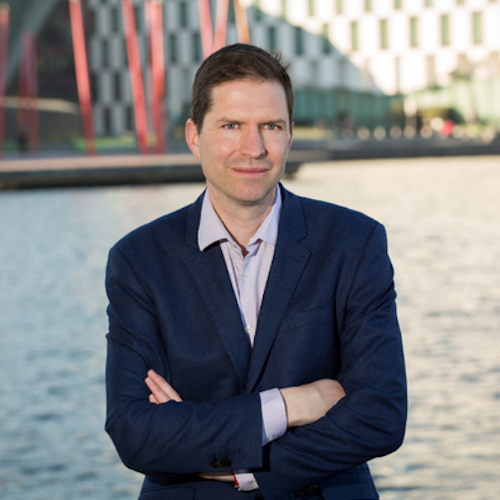Image courtesy of @DublinChamber
Dublin’s solar-powered Bigbelly bins were already smart, sending alerts when they are almost full to streamline collections. Now, they’re also being used to measure busyness in the city and to house small cell infrastructure to improve connectivity across Dublin.
This is the latest example of cities repurposing existing smart infrastructure to address urgent new challenges brought on by the COVID-19 pandemic.
As part of a pilot project with Dublin City Council, smart bin provider Bigbelly configured its system to include time stamps, triggered each time rubbish is deposited.
This data offers a snapshot of “the pulse of the city,” at a time of unprecedented demand for these insights at the local and national level, said Dublin’s Smart City Program Manager, Jamie Cudden.
“Our 350 bins are in parks, the city centre and the suburbs so you can start getting an idea of activities happening across different parts of the city, and the data will complement other datasets in terms of busyness and what’s happening in the city,” he told Cities Today.
Small radar sensors have also been placed on around 20 of the bins to give a better granularity of data, such as footfall.

The Internet of Bins
Further putting its bins to work, Dublin is exploring their use as a platform for small cell equipment to densify networks and pave the way for 5G.
This is part of the city’s broader efforts to ramp up connectivity in the city, including the creation of a new dedicated telecoms department, as the pandemic has highlighted globally the importance of internet access for work, education and social connections.
Dublin is chairing the Connected City Infrastructure programme within the Telecom Infra Project (TIP), which brings together companies including Cellnex, Three, Siklu, Schréder and Ligman, as well as Bigbelly, to develop a standardised approach that enables radio and Wi-Fi equipment to be easily integrated into existing and new street-level infrastructure, such as streetlights, smart poles, bins and more.
The initiative aims to help cities make it easier and faster for operators to deploy telecom services; expand the market and scale for infrastructure and equipment providers; and reduce visual clutter from an increased number of small cells.
Vishal Mathur, Global Head of Engagement, Telecom Infra Project, told council representatives that TIP is working with a growing number of cities, alongside traditional telco industry players and startups.
He said: “The idea is that by bringing open interfaces and disaggregation in networks, you’re commoditising hardware, to bring it to the lowest common denominator in terms of driving economies of scale and hardware – radio units, WiFi access points – and then ‘softwarise’ as much of the intelligence as required.
“That drives in competition and lowers the barriers to entry for new players. We break those lock-ins [between buyers and providers] and we change the way networks are invested in the future.”
Business models
The TIP initiative also follows the European Commission adopting new specifications on the physical and technical characteristics for small cell equipment, recommending that antenna meeting these guidelines should be exempt from planning permission requirements.
“The new small cells (antennas) will be less visible (either fully integrated and invisible to the general public or, if visible, occupy a maximum space of 30 litres).”
Solutions developed through the Connected City Infrastructure project will be validated in Dublin’s Smart Docklands testbed with a view to expanding them across the city. This will culminate in a blueprint which other cities and stakeholders can adopt on the operational and business models for deploying small cells on street assets.
Mathur noted that operating models can vary according to asset location and availability.
He said: “If Dublin can develop a digital map of all its assets, street furniture and locations, etc. and see which ones have fibre and power, where the street lighting is, etc. – that is a massive strategic asset that they can leverage quite quickly to procure services, or participants to come to the table with connectivity, small cell solutions or street furniture solutions.
“What we’re setting out is the framework.”
Dublin has now also set up a dedicated telecoms unit to streamline access, accelerate rollout and attract private investment. It is collaborating with the City of Glasgow, which recently created a similar department.
The team will act as a central point of contact for telecom-related issues and asset management. They will create a data catalogue and establish legal frameworks for the deployment and use of infrastructure.
“The reaction we’re getting from the operators in the sector is that they are absolutely delighted,” said Cudden. “Previously they might not have dealt with the city because of the challenge of working across silos and with different asset owners.”
The video below highlights the way which these bins operate, see below:
This article first appeared on cities-today.com













